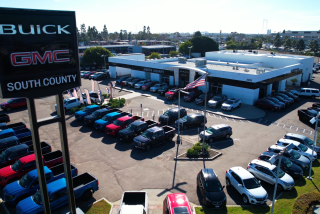Toyota Abandons Goal of 50% U.S. Sales Hike
DETROIT — In what may signal a more constrained approach to the American auto market, Toyota Motor Corp. said Tuesday that it has backed off from its plan to boost U.S. sales by 50% by the mid-1990s.
A high-ranking official of Japan’s No. 1 auto maker also predicted that Detroit’s Big Three auto makers would gain market share next year, a statement that some analysts said might be aimed at easing U.S.-Japan trade frictions.
“It’s a kinder, gentler Toyota for the 1990s,” said George Borst, vice president for strategic and product planning for Toyota Motor Sales U.S.A.
Borst, who made his comments at the unveiling here of Toyota’s 1992 Camry, said constraints on the company’s production capacity would prevent it from reaching the 1.5 million goal it had set two years ago. The company sold just over 1 million vehicles last year. Borst declined to specify Toyota’s new sales goal.
Adopting an unusually amiable tone toward his U.S. competitors, Borst praised the new models introduced this month by General Motors and Ford Motor while predicting that the Big Three would gain market share next year.
“They have some good products coming that will bring people in,” Borst said.
A hike in Big Three market share would reverse an industry trend that has seen the Japanese portion of the U.S. car market escalate from 19.6% in 1985 to 37% through the first nine months of 1991. Big Three share has plummeted from 74.4% to 64% over the same period.
Toyota’s annual sales have nearly doubled since the Japanese drive to penetrate the U.S. market began in earnest in 1983. To meet increased U.S. demand, the auto maker plans to nearly double the capacity of its Georgetown, Ky., assembly plant, where it builds the Camry.
But Borst said the company now does not have the production capacity in Japan and the United States to build enough cars to keep pace with the growth of the car and truck market as it recovers throughout 1992. Of the 1.5 million more vehicles that will be sold in the U.S. market in 1992 over 1991, 80% will be sales of Big Three vehicles, inching their combined share up about 1 percentage point, Borst predicted.
Analysts interviewed Tuesday afternoon agreed that the Big Three have begun to more effectively combat the Japanese incursion in the U.S. market, but suggested that Toyota’s move has more to do with political pressure than production constraints.
“The dramatic growth that the Japanese have experienced in the last five or six years is beginning to slow, because the domestics are offering more competitive products,” said Chris Cedergren, an analyst with AutoPacific Group, a consulting firm in Santa Ana. “However, that does not mean the Japanese are weakening.”
With heightened trade tensions between the United States and Japan and the threat of legislation aimed at protecting the domestic auto industry from the Japanese, Toyota may be sacrificing growth in the short-term to improve its long-term prospects, analysts said.
“Toyota is a company with a great deal of money and a great deal of power,” Cedergren said. “If they want to increase their share substantially they probably could still do it. But like the rest of the Japanese, they want to walk a little more softly in the U.S. market--or create that perception.”
Borst acknowledged the company’s sensitivity to the often-hostile environment for Japanese auto makers in Washington, but he stopped short of conceding Toyota’s new kindliness as a political strategy.
“I think on . . . (Capitol) Hill there’s a misperception in a lot of members’ minds about the industry,” he said. “All we’re trying to do is present the other side, to say that there’s room in this market for everyone to grow and be prosperous.”






